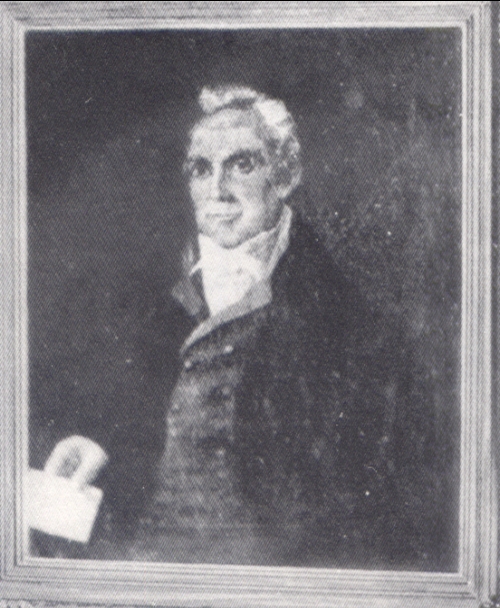
Portrait of Jonathan Catherall II in 'Buckley and District' by Thomas Cropper and 'A History of Saint John's Congregational Church 1792 to 1947' by Reverend Robert Shepherd, M.A.(Cantab)"

1820
These notes of James Bentley's have been transcribed unchanged. Note the acknowledgement of the notes'
source.
The "Catherall Family" (Flints Hist. Soc. Vol 16 "The Buckley Potteries" J.E. Messham.)
1740Family were free-holders, bordering common land. Two branches of family had potteries, or "brikils".
1751Jonathan Catherall, in his will, styled himself "potter". He was the younger son of John Catherall of Ewloe and was born in 1689. He had bought land from brother John, and nephew Joseph, and his works were on the site of the present "Trap" Brickworks. His nephew Benjamin Catherall, whose land bordered Jonathan's, was also a potter and brick manufacturer.
1788 Benjamin Catherall, yeoman, and his son and heir, borrowed £140.00 from one Edwin Platt, and a few years later owed £200.00. Also had other debts.
1793 They were borrowing £250.00 from Rigby to pay off Platt. During the next two years the mortgage was transferred from one to another until the estate was made over to the mortgage with a promise that Benjamin should have the parlour part of the house for life. He died on 1801.
1806 Benjamin's son was living in Lancashire and although still termed a "brickmaker", there is no trace of any potteries or brickworks on their former lands in Ewloe.
1689 Ewloe. Birthplace of the first Jonathan Catherall, whose father was John Catherall. John and Elizabeth Catherall of Ewloe held freehold land between Liverpool Road and Pinfold.
NOTE: Ewloe Manor covered all this area of present day Buckley, viz; Ewloe Wood, Ewloe Town, Buckley Mountain.
Jonathan, for clarity, is termed "JONATHAN I"! Soon after the completion of the River Dee canal cut in 1737, he began making fire bricks on a small scale and already owned a pottery and brickworks. He had a son, born 1759, and five daughters. Two of the daughters married potters. One to John Connah, the other to William Hancock.
His son, John, was born in 1759. He married Martha and had three sons, viz; John, Joseph and Jonathan. John died in 1777, falling from a horse on Saltney causeway. He had a reputation for wildness, love for bad women, and horses.
Martha had a wise, formative influence on Jonathan's upbringing. Jonathan built two potteries. One stoneware works for the Irish distillery trade, and also travelled on horseback through Wales, on his journeying to London, and other towns and cities. On his mother's death he owned Ewloe Place brickworks alongside the two potteries. The original works at the "Trap" finished in1841, when others took over ownership.
1791 Jonathan had a series of strokes.
1792Whilst travelling for business, on horseback, he lost the use of his right side, then after two nights was carried in a chair (to Manchester) to the home of a Mr and Mrs Clegg. He had another stroke in April. His mother came and he was bled and treated with leeches. On the 24 April he was able to ride. He had another attack and was again bled.
1793 Jonathan had another attack, was given water and continued his journey. As a result of his frequent strokes, he agreed to organise facilities for teaching of the Gospel. This commenced in a potter's shed at Whitley's Pottery, and continued until his mother's death. He moved from his mother's home (now the "Hope and Anchor" Tavern), to a new house, situated on the Mountain, adjacent to the parish boundaries of Ewloe and Bistre. These premises were the venue of non-conformist religious meetings. In 1797, he registered his dining room as a meeting place. He also bought land on an enclosure of the Mold land and purchased the trees at the front. In 1809-11 he married the daughter of a vicar from Lleyn Peninsula. The plaque commemorating this event is mounted in St John's U.R.C Church. 1809-11. At this period his income from stone jar manufacturing was £1,000 p.a.
Author: Bentley, James
Tags
Year = 1820
Gender = Male
Object = Visual Art
People = Single
Extra = Formal Portrait
Extra = Visual Arts
Extra = Pre 1900
Copyright © 2015 The Buckley Society